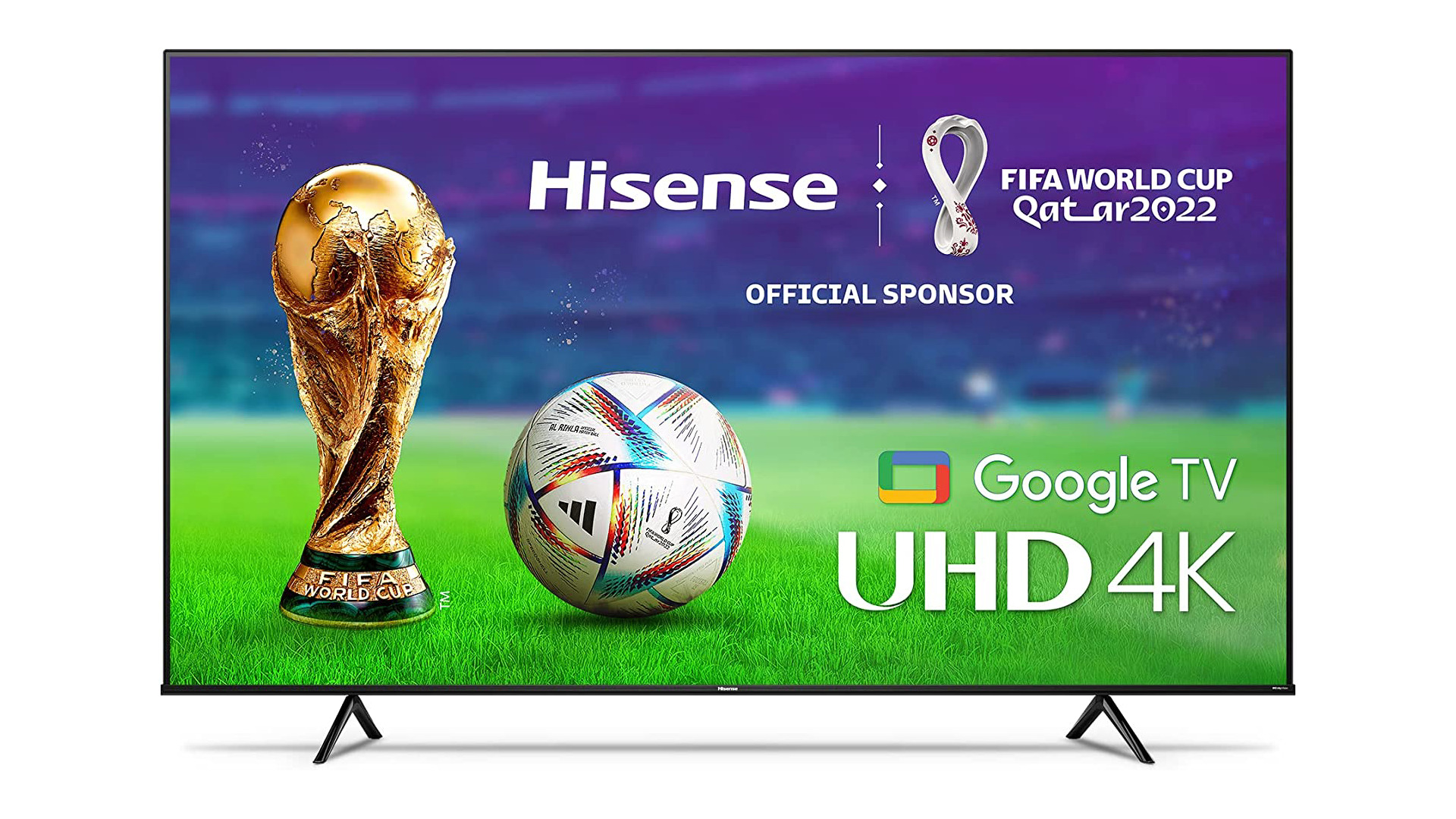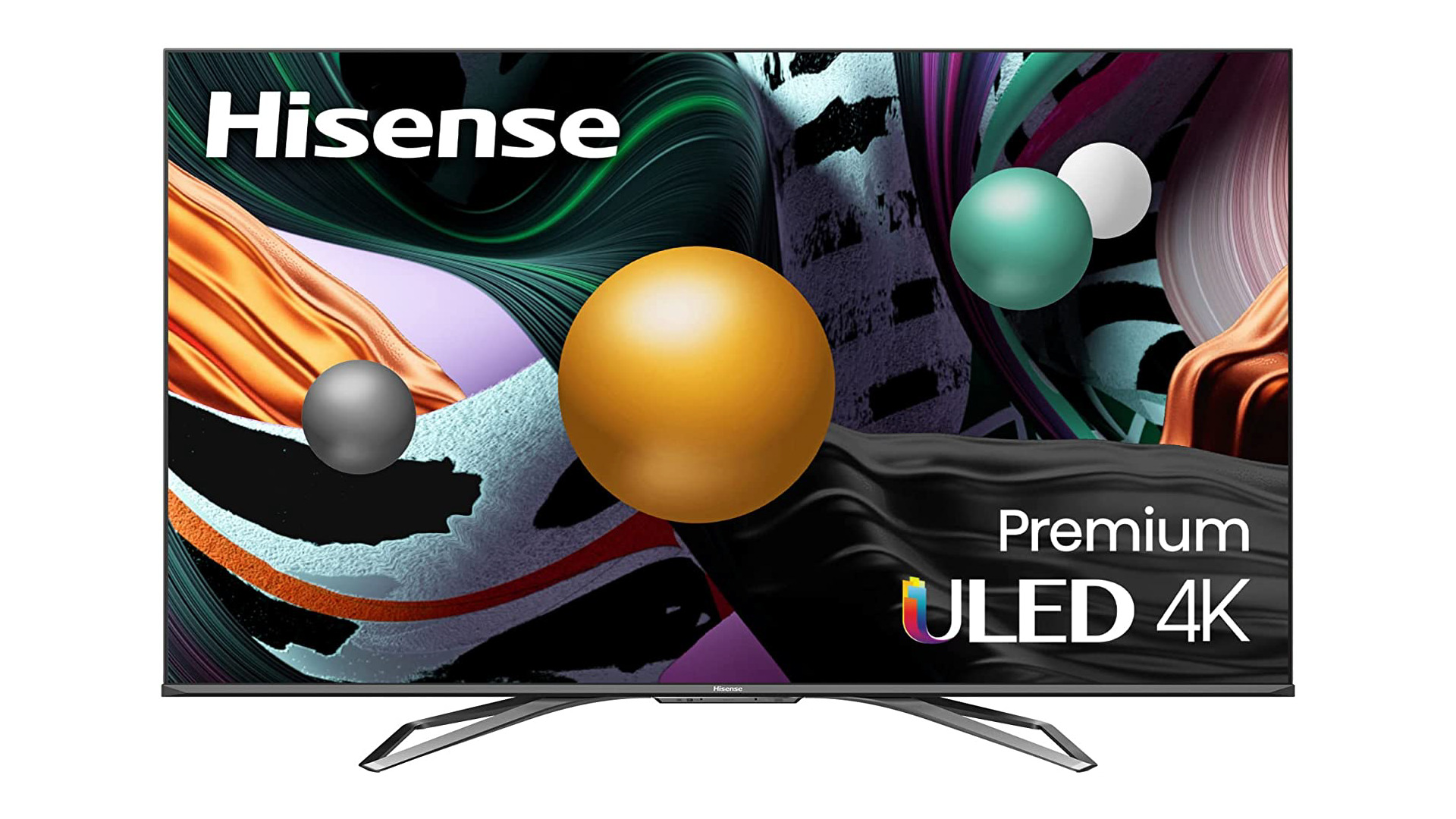Moreover, most all-out gaming TVs packing top-end specs cost upwards of $1000, but that doesn’t mean you have to shell out so much money to enjoy gaming on a TV. We have curated some of the best budget TVs for gaming, and spoiler alert, they start as low as $250. Before we get to the TVs,
Here are some of the best budget gaming monitors under $400 that you can consider. Check out these cool RGB light strips for your gaming room. Here’s everything you need to know if you’re confused between a gaming monitor and a TV.
Now, let’s get to the best budget gaming TVs on the market.
1. Hisense A6H 4K Smart TV
Screen type: IPS LCD | Resolution: 4K | Peak Brightness: 400nits Refresh rate: 60Hz | Response time: <16ms Ports: 1xHDMI 2.1 (eARC), 2xHDMI, 2xUSB, Digital audio out, 3.5mm audio Other Features: VRR, ALLM, Gaming Mode, Dolby Vision
Hisense A6H 4K Smart TV has a 50-inch 4K screen, which translates into sharp visuals, although user reviews point out that the IPS LCD panel used here isn’t the best quality. Expect the contrast levels not to be excellent, especially in dimly lit scenes. However, it supports Dolby Vision and HDR playback, which improves the viewing experience for supported content. Further, the A6 series runs on Android, so you can access thousands of streaming apps and Android TV games. In terms of ports and connectivity, you get 3 HDMI ports, all supporting [email protected] However, only one of them is HDMI 2.1 (eARC). The regular HDMI ports offer lower bandwidth than the eARC ports, which might impact gaming responsiveness slightly. Nevertheless, for its price, this is easily the best budget smart TV for gaming.
Pros: Superb pricing, variable refresh rate, low-latency gaming Cons: Average picture quality, 60Hz, only one HDMI 2.1 port
2. TCL Class-5 Series 4K QLED TV
Screen type: QLED | Resolution: 4K | Peak Brightness: 600nits Refresh Rate: 60Hz | Response time: <16ms Ports: 4xHDMI 2.1 (1 eARC), 1xUSB, Digital audio out, 3.5mm audio Other Features: VRR, ALLM, AMD FreeSync, Dolby Vision+Atmos
All this jargon means TCL Class-5 Series 4K QLED TV can adjust its screen’s refresh rate based on the fps being output by your game. This enables users to get a seamless, smooth gaming experience. Although this TV doesn’t have a high refresh rate display, it’s still a perfectly good tv for gaming, especially for its price. Furthermore, there’s support for Dolby Vision, HDR, and Dolby Atmos, the holy grail of top-notch multimedia immersion. This TV runs on the Roku platform, which has its app ecosystem and might feel right at home for people already used to Roku’s navigation UI. Although, you won’t be able to run any Android apps here, and the presence of a 60Hz display means you can’t enjoy buttery smooth animations on it.
Pros: QLED display, variable refresh rate, Dolby Vision+Atmos Cons: 60Hz, doesn’t run Android OS
3. Vizio MQX Series 4K 120Hz TV
Screen type: QLED | Resolution: 4K | Peak Brightness: 1000nits Refresh Rate: 120Hz | Response time: <12ms Ports: 4xHDMI 2.1 (1 eARC), 1xUSB, Digital audio out, 3.5mm audio Other Features: VRR, ALLM, AMD FreeSync, Wi-Fi 6E
This is not just one of the cheapest gaming TVs with a 120Hz screen; it’s also a full-array backlit+local dimming QLED panel, which offers punchy contrast and up to 1000nits of peak brightness. It supports Dolby Vision+Atmos playback and also HDR10+ content. Notably, the TV runs on Vizio’s OS platform, so you will have to make do with its app library instead of the Android TV experience. Coming back to the gaming chops on offer, the TV supports the latest Wi-Fi 6E, offering much higher internet speeds on Wi-Fi 6 networks. It has 4 HDMI 2.1 ports, although only one can run 4K at full 120fps. Nevertheless, you can also use this TV to play 1080p games at 240Hz, resulting in buttery smooth animations and superfast response times. The impressive picture quality and latest gaming features that it offers have made many users call it one of the best budget gaming TV in the market right now.
Pros: QLED display, 120Hz smoothness, full-array local dimming Cons: Only 1 HDMI port supports 120Hz, no App store
4. Sony X85K Series 4K 120Hz TV
Screen type: IPS LCD | Resolution: 4K | Peak Brightness: 550nits Refresh rate: 120Hz | Response time: <13ms Ports: 2x HDMI 2.1 (1 eARC), 2x HDMI, 2x USB, Digital audio out Other Features: VRR, ALLM, PlayStation features, TRILUMINOS Pro color engine
These PS-specific features enable the Sony X85K Series 120Hz TV to deliver a low-latency, super-responsive gameplay experience on a PS5. You can also use this with an Xbox Series X, but that might have some limitations, e.g., 4K Dolby Vision gaming from the Xbox is limited to 60fps here. There are 4 HDMI ports present, but only two are of the 2.1 standards. Also, this TV doesn’t come with a headphone jack, so plugging in an older set of speakers might be a hassle. The X85K series features a regular backlit LED display, so it can’t match the black levels and punchiness of QLED displays. However, Sony’s TRILUMINOS engine does a decent job of making the colors come to life. Besides, the support for HDR content is a bonus. That being said, the lack of local dimming means the black levels in dimly lit scenes leave much to be desired. It runs on the Android TV platform, giving you access to Google’s app library. If you’re a Playstation owner, this TV is still one of the best TVs for PS5 gaming.
Pros: Sony’s image processing, 120Hz smoothness, PlayStation-specific features Cons: No local dimming, can’t match QLED screens, lacks 3.5mm jack
5. Hisense U8G QLED 4K TV
Screen type: QLED | Resolution: 4K | Peak Brightness: 1500nits Refresh rate: 120Hz | Response time: <9ms Ports: 2x HDMI 2.1 (1 eARC), 2x HDMI, 2x USB, Digital audio out, 3.5mm audio Other Features: VRR, ALLM, Full-array local dimming, wide color gamut
The Hisense U8G TV features a 120Hz screen and 2 HDMI ports that can support 4K at 120Hz, meaning you can easily hook this TV up with two gaming consoles. It also features two regular HDMI ports, 2 USB ports, and even a headphone jack. There’s support for all the gaming features like a dedicated gaming mode, auto low-latency mode, and support for variable refresh rates from 48Hz-120Hz. It runs on Android TV software and has one of the most responsive TV UI experiences. All these features, combined with its massive 65-inch size, make this our pick for the best smart TV for gaming under $1000. Some reviews have pointed out that the high refresh rate on this TV results in some visible stutters when viewing low fps content, especially 24fps content. Also, the super-high screen brightness sometimes produces extra-bright highlights in some non-optimized games. So, consider this before purchasing this TV.
Pros: Ultra-low input lag, super-bright display, well-tuned colors Cons: Occasional stuttering at low fps content, highlights get too bright sometimes
6. LG C2 4K 120Hz OLED TV
Screen type: OLED | Resolution: 4K | Peak Brightness: 800nits Refresh rate: 120Hz | Response time: <3ms Ports: 4x HDMI 2.1 (1 eARC), 3x USB, Digital audio out Other Features: VRR, ALLM, Full-array local dimming, wide color gamut
While it can’t get as bright as the Hisense U8G, the OLED screen still delivers captivating visuals, whether you’re consuming regular video content or games. This TV has 4 HDMI ports, which can push 4K visuals at 120Hz, making it an excellent option for people planning to use more than one gaming peripherals. Like all other LG TVs, it runs on LG’s WebOS software, which is known to be feature-rich and pretty easy to use. However, you miss out on access to Google Play Store apps. Also, the folks over at RTings.com found that the HDR color volume of this TV wasn’t the best, with non-white colors not looking as bright as they should. Despite that, it’s not just the best OLED TV for gaming under $1000 but also one of the best overall TVs for its price. Although you’ll have to make do with its 48-inch screen, compared to the bigger 55 and 65-inch screens of the other TVs in this list. Lastly, there’s always a slight risk of permanent burn-ins with OLED displays, although we haven’t found a lot of reviews mentioning the same.
Pros: OLED screen, well-tuned colors, quick response time Cons: Inconsistent HDR colors, slight risk of permanent burn-in
Game On, on a Budget
Gaming TVs have gained massive popularity in the last couple of years. No wonder the best gaming TV options cost upwards of $2000 or even $3000. That’s not to say that everyone has to spend that kind of money to get a good gaming experience on their TV. Frankly, if the TV supports a decently bright panel and a big enough display, you’re good to go. If your budget permits, look for TVs with either VRR support or in-built Gaming modes. If you don’t want to spend a lot, you can get some great gaming monitors at a much better price. We hope this guide helped you pick the right gaming TV within your budget. The above article may contain affiliate links which help support Guiding Tech. However, it does not affect our editorial integrity. The content remains unbiased and authentic.














